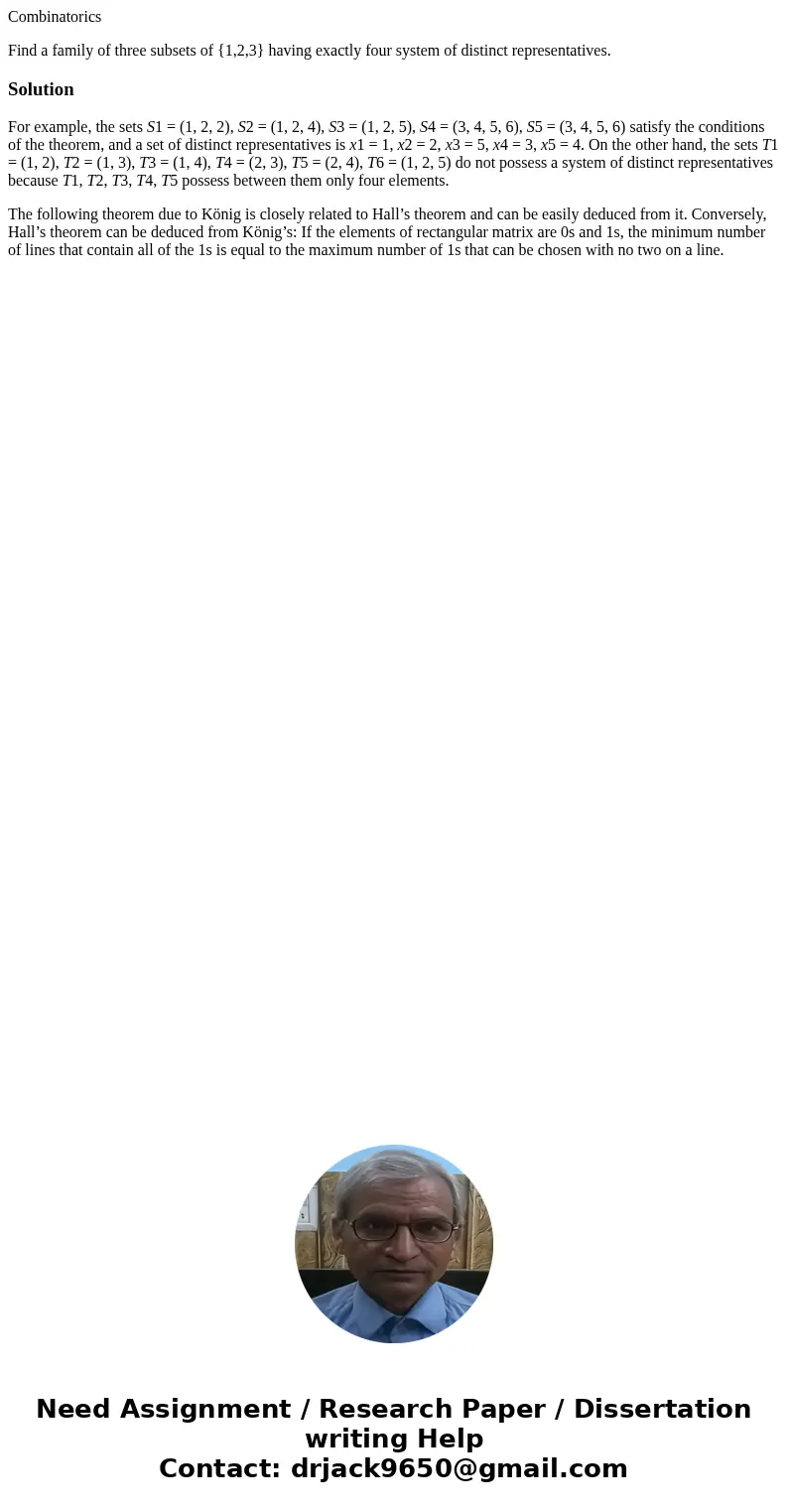Combinatorics Find a family of three subsets of 123 having e
Combinatorics
Find a family of three subsets of {1,2,3} having exactly four system of distinct representatives.
Solution
For example, the sets S1 = (1, 2, 2), S2 = (1, 2, 4), S3 = (1, 2, 5), S4 = (3, 4, 5, 6), S5 = (3, 4, 5, 6) satisfy the conditions of the theorem, and a set of distinct representatives is x1 = 1, x2 = 2, x3 = 5, x4 = 3, x5 = 4. On the other hand, the sets T1 = (1, 2), T2 = (1, 3), T3 = (1, 4), T4 = (2, 3), T5 = (2, 4), T6 = (1, 2, 5) do not possess a system of distinct representatives because T1, T2, T3, T4, T5 possess between them only four elements.
The following theorem due to König is closely related to Hall’s theorem and can be easily deduced from it. Conversely, Hall’s theorem can be deduced from König’s: If the elements of rectangular matrix are 0s and 1s, the minimum number of lines that contain all of the 1s is equal to the maximum number of 1s that can be chosen with no two on a line.

 Homework Sourse
Homework Sourse